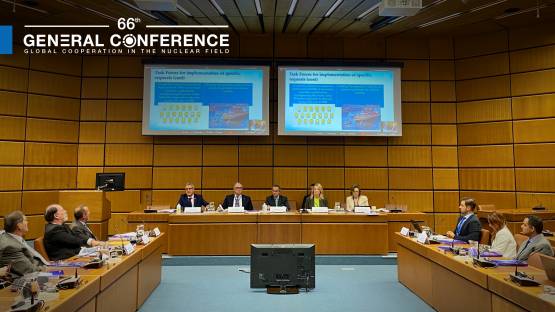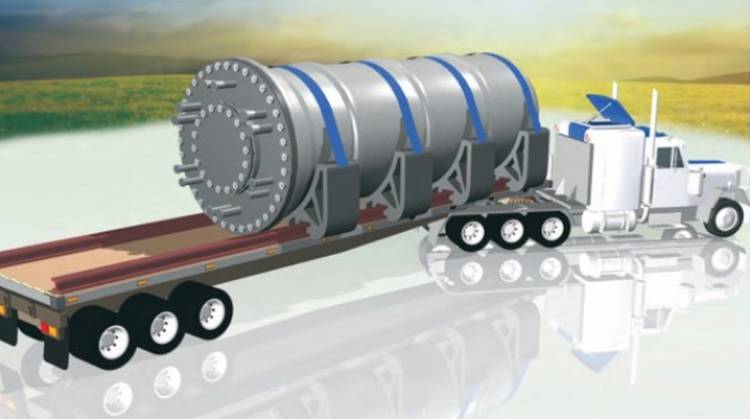One year after the launch of the IAEA Platform on Small Modular Reactors (SMR) and their Applications, experts from the IAEA and around the world came together at an event during the 66th IAEA General Conference to assess its achievements and outlook in supporting SMR development, deployment, licensing and oversight worldwide.
The event today included an overview of the latest updates on the platform, as well as presentations on the IAEA’s Medium Term Strategy for SMRs and on the related Nuclear Harmonization and Standardization Initiative. The event also showcased IAEA SMR support to Brazil and Jordan and the platform’s new online portal, as well as two new IAEA publications: Small Modular Reactors: A New Nuclear Energy Paradigm and the latest edition of Advances in Small Modular Reactor Technology Developments.
“SMRs are perhaps the most exciting and most watched emerging technology in nuclear power today,” Mikhail Chudakov, IAEA Deputy Director General and Head of the Department of Nuclear Energy told event participants. “Member States from Africa and the Americas to Asia and Europe are developing or interested in deploying SMRs, and in a variety of ways, the IAEA Platform on SMRs and their electric and non-electric applications is helping them to do this effectively, safely and securely.”
With more than 80 SMR designs under development in 19 countries and the first SMR units already in operation in China and Russia, SMRs including microreactors (MRs) are expected to play an increasingly important role in helping to ensure energy security as well as supporting the transition to net zero emissions, thus providing unique potential to address some of our most pressing challenges, from climate change to sustainable development. While the technology’s safety and economic competitiveness must be fully demonstrated before SMRs can be more widely deployed, the SMR Platform has developed a medium term strategy aimed at providing support to governments, operators, industry and regulators to address these and related challenges.
Brazil, for example, requested support from the SMR Platform last year in analysing "the economic aspects of SMRs [...] and their cost within our system,” said Celso Cunha, President of the Brazilian Association for the Development of Nuclear Activities (ABDAN), at the event. The IAEA then took part in a three-day course on SMRs organized by ABDAN. Several other related activities are planned including participation in the IAEA's Coordinated Research Project focused on the economic aspects of SMRs and in the IAEA Technical Working Group on SMRs (TWG-SMR).
"Jordan opted for SMR's in 2017," said Khaled Tukan, Chairman of the Jordan Atomic Energy Commission, in part because finding sufficient water resources to cool a conventional nuclear power plant in the dry and landlocked nation was proving challenging. Jordan is now working with the SMR Platform on consolidating the economic case for using SMRs for water desalination. "The numbers are promising," said Tukan, "but we need to check them with potential vendors and have asked for a neutral review of the data by IAEA."








